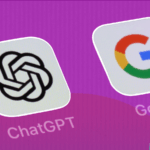By Jon Hudson, Vice President of Customer Success at Digital Turbine
Necessity may be the mother of all invention, but it’s friction that gives birth to billion-dollar tech markets. The app economy is one of the most innovative markets out there, and yet friction in new app discovery is stymying its growth. We see some signs that the big players in the industry recognize this constraint and their early innovations indicate there’s a multibillion-dollar market for the taking.
There are phenomenally innovative apps available, but in today’s friction-filled industry it’s too damn hard to discover one that might be perfect for our needs. “On-demand” is the gold standard of the tech industry. And while you may be able to enter the app store “on-demand,” most people still click on an ad to get there. And once the consumer is in the store, the onus is still on the consumer to find what they want – nothing is really provided proactively or “on-demand.”
All the friction makes it quite hard to find that innovative app. And when mobile abandonment rates can be as high as 80%, removing the friction upfront can make all the difference between the success and failure of an app. Thankfully, there are signs that we may be on the verge of a better app economy.
In order to understand where the industry is likely to go, it’s important to look at how we got here. Here are three observations that indicate that a new billion-dollar market is on the horizon.
Observation 1: The History of Media (And Apps)
We’ve pushed media from print to desktops to mobile in a continuing desire to eliminate friction from the media consumption process. In each case, the same cycle emerged: friction was eliminated, a new economy was created, and new choices emerged. However, there always has been a tipping point with choice. More choices don’t ultimately result in more brands being used. Rather, once there is too much choice, people stick to a small, reliable set of options until they have a better way to discover the media they love to consume.
Consider the emergence of the web. Engineers removed the friction involved with printed materials and put collective knowledge at our fingertips. The Internet soon spurred multiple billion-dollar economies by powering online news, commerce, and entertainment. Soon everyone had a website – but eventually, despite this explosion of content, a few victors emerged and others got lost in the shuffle.
With the advent of mobile, we’ve seen a similar evolution. Friction was removed by storing content in easily accessible apps spurring innovations like the smartphone and app stores. And now, billions of dollars are being spent in app-store optimization, UA advertising and mobile measurement platform industries all with the goal of helping match the right user to the right app. But once again we’re at the point where choice overload is setting in. As Comscore points out, the number of people who aren’t downloading any apps is up to 67%! This means something new to remove friction and help people discover media is once again needed.
Observation 2: The Continual Evolution of Netflix Helps Us “See What’s Next”
From its inception, Netflix’s desire was to eliminate friction. But they also recognized the importance of helping people discover – it keeps their business booming and evolving. It’s why “See What Next” is the perfect literal and figurative slogan for the company. While Netflix always helps us “see what’s next” in terms of what we want to watch, they are also able to “see what’s next” in terms of the industry by continuously evolving their business model and interface.
From the very beginning where people built long lists of DVDs to have mailed to them to today’s immersive interface, Netflix has made it super easy for people to discover the next thing they want to watch. When 80% of the shows watched are driven by its recommendations engine, Netflix has its pulse squarely on what its viewers want to watch next.
In our binge-happy world, most of the time you open Netflix you are likely looking to simply watch the next episode of whatever you watched the day before. It would be EASY for Netflix to make this assumption and just start you right there. Instead, however, we are taken to a Dim Sum menu of other titles that we can get a peek at…It’s still not hard to get to where we want to go, but we still get a glimpse of what else is out there.
When it comes to app choices, smartphone users face a similar problem. There’s a mountain of great choices, but no easy way for users to discover them. So while people aren’t downloading new apps, it’s not because they don’t want anything new – they just need help to “see what’s next” for them.
Observation 3: Developing Technologies Illuminate the Fracture
With no proactive recommendation engine guiding people, consumers are content to stick with the handful of apps they use regularly. Beyond that, most apps are installed because they serve an immediate need (like paying for parking) or because people have a major life change (like discovering new businesses after a home purchase).
However, given a taste, consumers become much more willing to install and try a new app. The success of technologies like Google’s Instant Apps, which allow consumers to experience an app on their phone prior to doing a full download, and Playable Ads, which give people a taste of a game (or another interactive app) before choosing to click bear this out.
Research also shows that new phone owners are 3x more likely to install apps than people who’ve had their phones for a year and that they install about 10 new apps. And therein lies the problem: there’s not a lot of evidence that outside of new phone acquisition, users are going to the app stores to discover new apps. As long as users are satisfied with the handful of tried and true apps, the app marketer has their work cut out for them.
Needed: A Netflix for Smartphones
So the question remains: how do we get users to change habits and start fueling the app economy? The best way would be to personalize and automate app discovery so that it’s easy for users to discover, try, and select the best apps for them to put on their smartphones.
Mobile giants are aware of this challenge. Aside from Instant Apps and Playable Ads mentioned above, users of iOS 14 will notice that Apple added a far-right screen to help them re-discover apps on their phone by placing them in easy-to-find groups. Apple Arcade and Google Stadia, while both nascent, are designed to give game players a taste of titles without having to download. But a broad, cross-category method is still missing.
What we need is an engine that helps suggest apps through proactive and on-demand delivery. For the app market to continue in its role as a major driver in the global economy, consumers must be motivated to discover, install, and use new apps. History tells us that eliminating friction gives rise to billion-dollar markets. It’s time to crack open the one that’s right there in front of us.
###
Jon Hudson currently serves as Vice President of Customer Success at Digital Turbine, leading the app media division that brings global brands on-device. Jon has been working in the media industry for 14 years and has held senior executive roles both in the US and internationally for Criteo and Jampp. He graduated from Portsmouth U.K with an honors degree in Business and Marketing.








